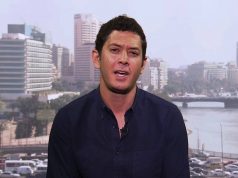A Children’s World of Imagination, Tolerance, and Friendship
Arthur D. Lubow, co-author of The Boy and the Boy King (AUC Press, 2020) gives us an inside look on a book meant to inspire and unleash the imagination and creativity of children. George H. Lewis is co-author and illustrator of the book.
Arthur is a little boy from New York. His imaginary friend is Bun-Bun, a stuffed rabbit (originally from England). Together they travel through the Temple of Dendur at the Metropolitan Museum to another time and place and befriend the lonely boy king, Tutankhamun, King Tut!
The book addresses friendship, hope, peace, tolerance, imagination, and dreams. How are these issues relevant to today’s children?
In our view, the shortage of friendship, hope, peace, and tolerance stems from a failure of imagination. Armed only with their unspoiled, innate sense of wonder, two boys who come from different “time zones” wage peace, not war.
This book is a celebration of childhood innocence and heart-sourced imagination, which leads to friendship and understanding, something the world needs more of right now.
Why is it so important for children like Arthur and the Boy King to unleash their imagination?
Why do Arthur and Tut both end up embracing an imaginary friend? At the most basic level, it’s because we all need imagination. And we all need friends. We run the danger these days of imposing a dull, insipid, and banal world upon our children. It all comes back again to allow our hearts and imagination to vibrate freely.
Were you inspired by Antoine de Saint-Exupéry’s classic children’s book The Little Prince? Is Bun-Bun a little like the fox giving advice to the little prince?
Yes and yes. George and I independently loved the idea of a child guided both by the cosmic pull of the stars and the love and admiration of a friend.
Why did you want to write this book?
We wanted to remind parents to guard their child’s imagination with all their hearts. There were teachers in both our childhoods who did their best to beat every ounce of creativity out of us.
Imagination and creativity are a form of intelligence that often go unmeasured, unappreciated, and unused. This is not a good idea in a civilization where most all health and wealth stem from creativity.
The illustrations are soft, rendered in gentle tones, the mood almost dreamy, magical, and fairy-like. Was this to convey the purity and wonder that exists in the realm of a child’s imagination?
I take great pleasure in showing the book. When I look into the viewers’ faces, I see that same dreamy, jaw-dropped, misty-eyed aura that you see in these wonderful illustrations.
If this book evokes that reaction—in different cultures around the world—well, maybe more folks will find and advocate for friendship and peace.
Through Bun-Bun, you describe the desert as a space that remembers and imagines, and point out that all humans are connected in the cosmos but that they don’t learn from their past and instead continue to wage wars. How much of these deeper messages, woven into the story, do you think children will pick up?
All of it. Not necessarily all at once. But we hope that readers of all ages will come back to the book again and again and find new things. Even we, as authors, are doing that. We’ve always said: never underestimate the intelligence of children.
If their lovely and timeless innocence is set free and allowed to blossom, children will teach us all more than we can ever imagine. Yes, there’s the old adage that “to teach is to learn.” But it’s also true that to learn is to teach. Watch. And learn.
AUC Bookstores: Migrant Dreams: Egyptian Workers in the Gulf States





